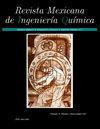Exploring the impact of acorn extract on the quality and taste of beef meat burgers
IF 1.3
4区 工程技术
Q4 CHEMISTRY, APPLIED
引用次数: 2
Abstract
Protein microparticles are of interest in the development of low-fat foods as stabilizing agents and, for their production, it is important to consider the influence of the processing conditions on stability and size of particles. In the present study, the characteristics of microparticles of soy protein isolate (SPI) obtained by microfluidization (MF) (110 MPa and 3 MF cycles) of aggregates obtained by heat treatment (95 °C for 15 min) and different pH values (3 , 5, 7 and 9). The results of particle size, zeta potential and turbiscan stability index (TSI) showed that the least stable microparticles in suspension were obtained at pH 5, due to their proximity to the average isoelectric point of soy proteins (4.5). In contrast, the most stable microparticles in suspension were obtained at pH 9, presenting small particle sizes (398.35 ± 4.19nm) and a low TSI (0.8 ± 0.08). By means of atomic force microscopy (AFM) it was possible to observe the breakdown of the aggregates for the formation of microparticles during the microparticulation process. Surface roughness and image texture analyses allowed evaluating the effect of MF on the surface of the microparticles. The most relevant descriptor for the characterization of microparticlers was the second angular moment whereas contrast, correlation, inverse difference moment, entropy, and fractal dimension did not correlate with the characteristics of the images in the whole range of operating conditions given that their calculation algorithms are not sensitive enough to detect the small variations in roughness of the samples. The best conditions for production of microparticels were 3 cycles of MF and pH 9 which gave place to homogenous and stable systems.探索橡子提取物对牛肉汉堡质量和口感的影响
蛋白质微颗粒作为稳定剂在低脂食品的开发中很有意义,对于它们的生产,重要的是要考虑加工条件对颗粒稳定性和大小的影响。在目前的研究中,微粒子的特点得到的大豆分离蛋白(SPI) microfluidization (MF) (110 MPa和3曼氏金融周期)的聚合物通过热处理获得15分钟(95°C)和不同的pH值(3、5、7和9)。颗粒大小的结果,电动电势和turbiscan稳定指数(TSI)显示,得到了最稳定的微粒悬浮在pH值5,由于他们接近平均大豆蛋白质的等电点(4.5)。pH值为9时,悬浮微粒最稳定,粒径较小(398.35±4.19nm), TSI较低(0.8±0.08)。通过原子力显微镜(AFM),可以观察到微颗粒形成过程中聚集体的分解。表面粗糙度和图像纹理分析允许评估MF对微粒表面的影响。与微颗粒表征最相关的描述符是第二角矩,而对比度、相关性、逆差矩、熵和分形维数与整个操作条件下的图像特征不相关,因为它们的计算算法不够灵敏,无法检测到样品粗糙度的微小变化。生产微颗粒的最佳条件为3个周期的MF和pH为9,从而形成均匀稳定的体系。
本文章由计算机程序翻译,如有差异,请以英文原文为准。
求助全文
约1分钟内获得全文
求助全文
来源期刊
CiteScore
3.60
自引率
33.30%
发文量
50
审稿时长
>12 weeks
期刊介绍:
Revista Mexicana de Ingeniería Química (ISSN 1665-2738) publishes original research articles, with the aim of promoting rapid communication of relevant research in the several disciplines within Chemical Engineering and its interfaces with other engineering disciplines. The contents of the journal are directed to researchers, academics, students and decision makers.
The covered topics are:
Thermodynamics; Catalysis, kinetics and reactors; Simulation and control; Transport phenomena; Safety; Process engineering; Biotechnology; Food engineering; Sustainable development; Environmental engineering; Materials; Applied mathematics and Education.

 求助内容:
求助内容: 应助结果提醒方式:
应助结果提醒方式:


